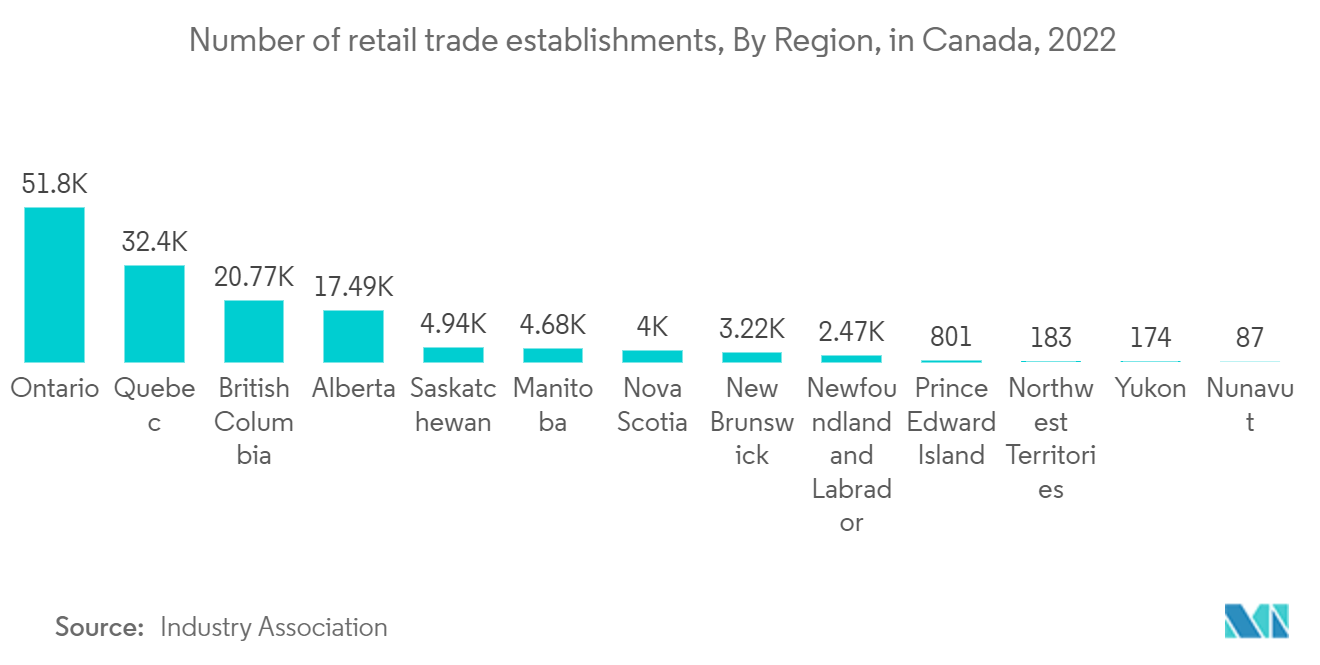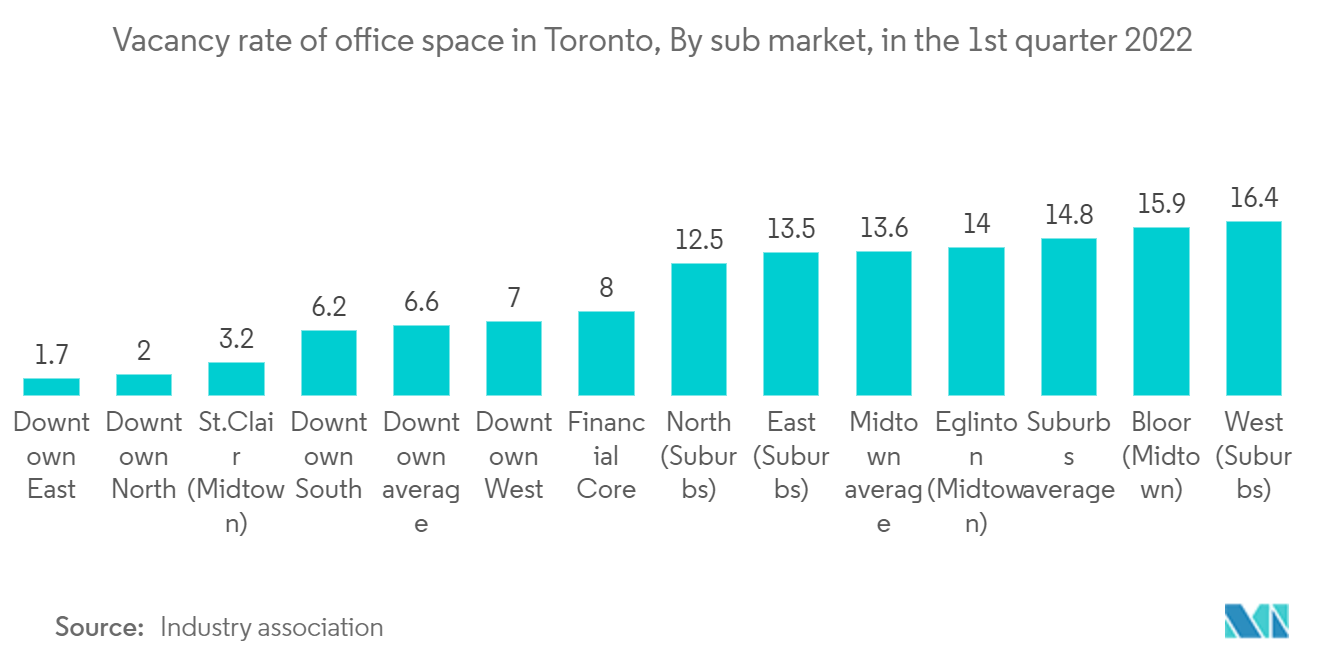Market Trends of Canada Commercial Real Estate Industry
Evolution of retail sector driving the market
The demand for products entering the Canadian market has increased due to the recent decade's robust retail expansion. The majority of the big retailers have acquired or built sophisticated new centers that can satisfy the "just-in-time" requirement of growing retail platforms, which has contributed to the booming storage and distribution business.
Demand often equals new space building because our industrial space is typically given to the market just in time. Because of the rush by investors and developers to secure these highly sought-after long-term tenants and space users, this has boosted market activity.
Because of the rush by investors and developers to secure these highly sought-after long-term tenants and space users, this has boosted market activity. Vacancy rates are lower in Toronto than they are in the majority of the US, a market that is expanding quickly. Other Canadian markets have different rates, with the national average coming in at just over 6%, which is slightly more than what members like.
Although asking rents have grown significantly, effective retail rentals have yet to make any headway toward catching up to inflation. Only a slight rise in average rental rates has been observed. While Vancouver continues to lead the pack in terms of rental rate appreciation, closely followed by Toronto, Calgary is finally returning to pre-pandemic levels.

Office spaces in Toronto and Vancouver are increasing
Office occupancy rates in downtown Toronto and Vancouver are rising swiftly. The third quarter of 2022 saw Canadian office markets continue to grow, with CBRE's new Q3 Figures report providing signs of growth in downtown areas despite resurgent demand for premium office space.
According to industry experts, Canadian office markets have proven extraordinarily resilient despite years of pandemic-related obstacles, new supply additions, persistent remote work issues, as well as a pending economic recession.
These most recent statistics provide solid proof that cities' vitality and momentum are returning, supporting increased leasing activity. Despite the fact that the economy is the center of attention, it is proving to be harder to anticipate than normal.
Indian IT service business Mphasis chose Calgary's First Tower as the location for its brand-new 26,160 square-foot Canadian headquarters. Microsoft secured a deal for about 400,000 square feet at the B6 building in Vancouver (1090 W Pender Street).
In the meantime, Toronto saw medical technology vendor PointClickCare increase its presence by acquiring 90,000 square feet over three floors at The Well, one of the most well-known new complexes in the city.
In 2022 Q3, downtown vacancy decreased in seven of Canada's ten major office cities, while suburban vacancy decreased in five of those markets. In the midst of a flurry of leasing transactions, Calgary, Waterloo Region, and Vancouver all saw their downtown and suburban office vacancy rates decline, making them the actual MVPs of the quarter.


